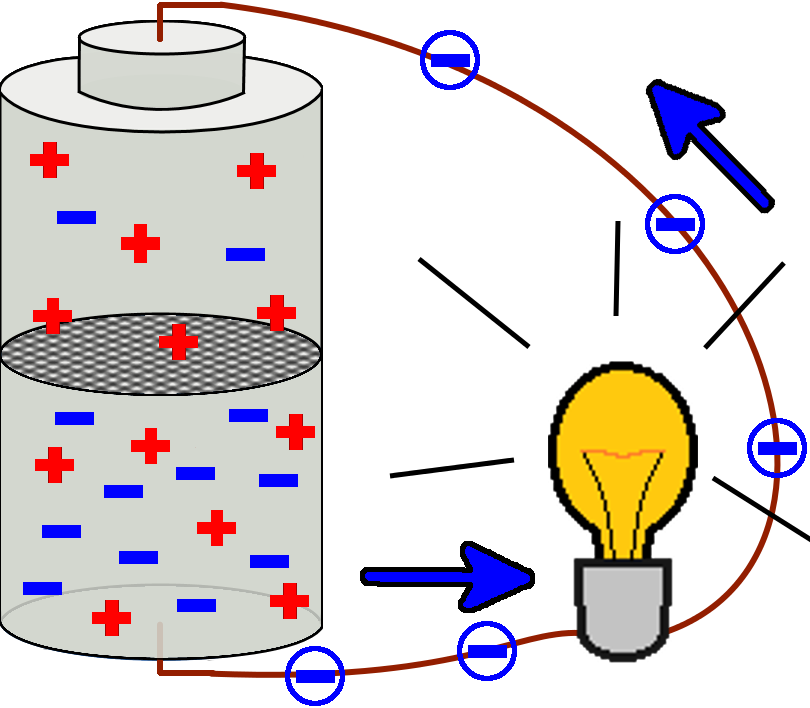Inside the battery
Correct, this is the solution.If the battery is fully charged, the charges are distributed such that the lower cell is charged negatively and the upper one positively. In the inside of the battery the chambers are divided in a way that no interaction between the two is enabled. That is why it is necessary to establish a connection between the chambers outside of the battery. If they are connected by a conductor, the charges are able to move freely between the cells. The negative charges are attracted by the positively charged cell. Within the electric circuit the negative charges are further pushed to one direction (towards the positively charged chamber), so that an electric current is generated which lights up the lamp.

The current flow continues as long as the wires are connected to the battery. If you disconnect them or the charges between the cells are balanced out, the electric current will come to a standstill. No charges are being pushed through the electric wires anymore and the current flow stops. In everyday life one would say "The battery is empty" although there are still plenty of charges within. Thus the battery is "empty", if there is exactly the same amount of positive and negative charges in each of the two cells. Consequently, the battery is charged neutrally and so the negative charges are not attracted anymore.
*Normally, only the negative charges move. These are electrons, which are able to move more freely.
